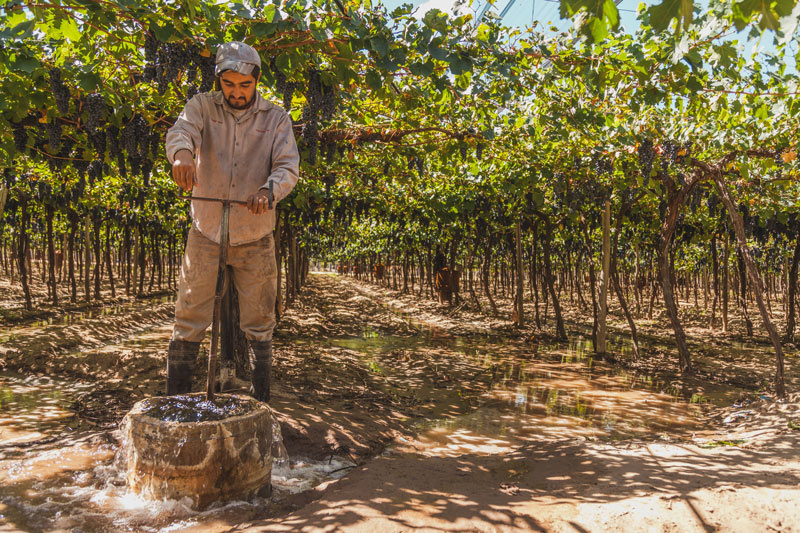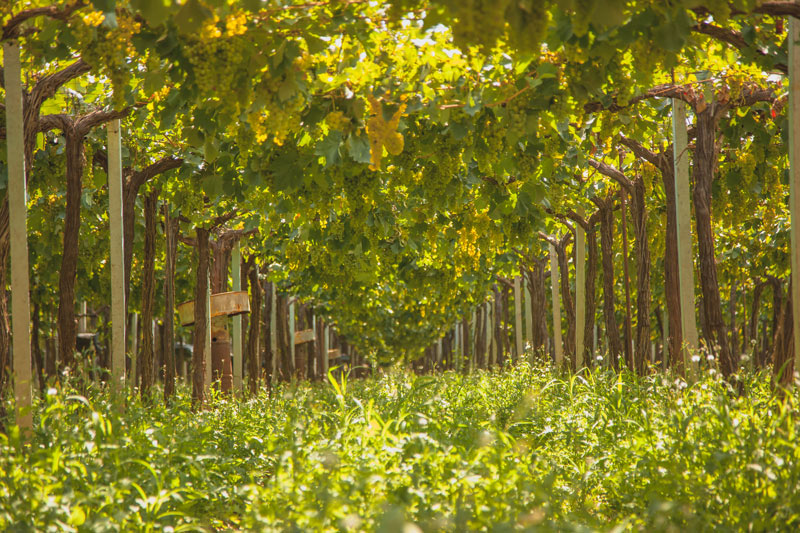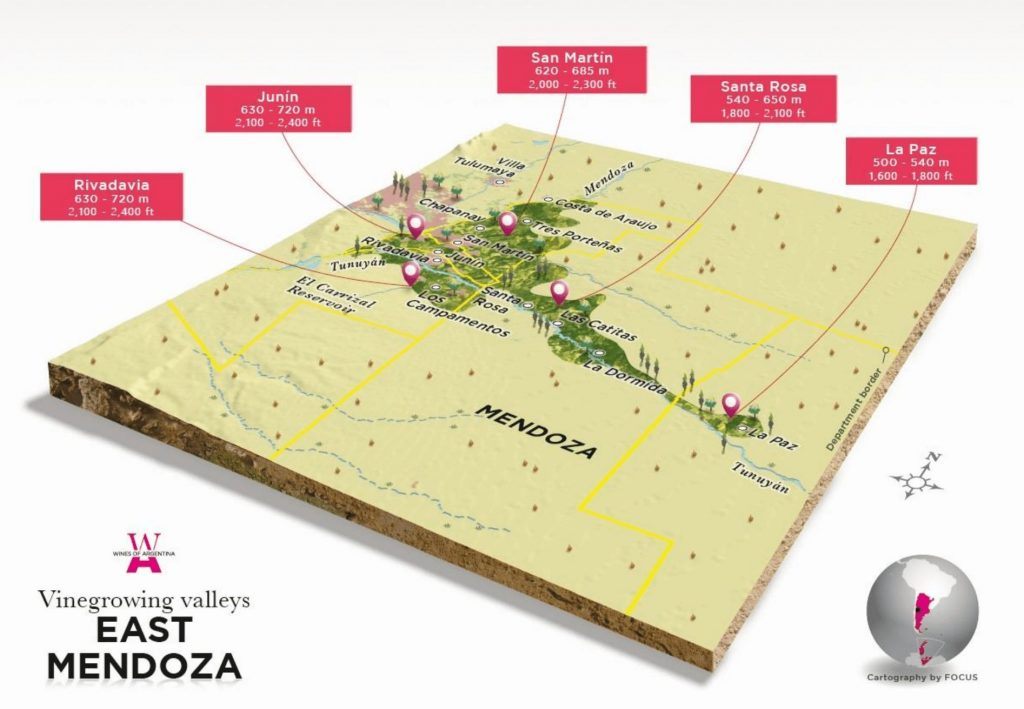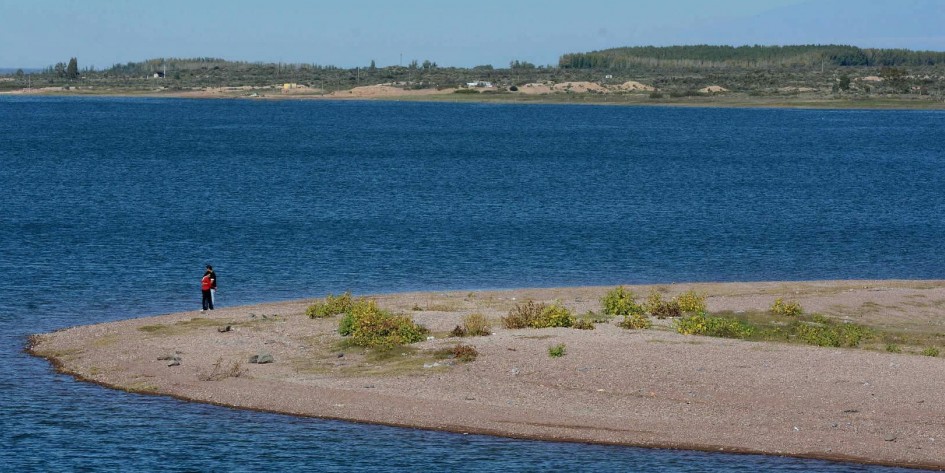Eastern Mendoza might not even be on your wine-drinking radar, but these regions make up almost half of Mendoza’s entire production. Here’s our guide to everything you need to know about Eastern Mendoza and its wine regions.
With over 64,000 hectares of vines planted, Eastern Mendoza is very much the silent workhorse of Argentine wine. It doesn’t have the glamour or fame of the wine regions closer to the mountains but it does boast the practicality of fertile, flat and warm lands that are well-suited to easy-drinking, larger production wines. Often offering excellent value, Eastern Mendoza shouldn’t be overlooked in terms of its importance in putting some of Argentina’s popularly-loved everyday wines on the table.
A guide to Eastern Mendoza and its wine regions
Although this is the land of plenty, Eastern Mendoza’s vineyards are on a downward trend, losing some 4,000 hectares in the last 20 years. This is due to the changing wine market (domestically and internationally everyone is generally drinking less but better) and low grape prices for fruit from the east. Climate change is making these regions hotter and the wines flabbier, which is an increasing consideration for winemakers in the east.
What is happening of note throughout the region is the rapid conversion from white and pink (mainly Criolla) grape varieties to red varieties. The warmer temperatures are favourable to jammy, soft red wines but leave little definition in white wines and lighter red or pink varieties.
Eastern Mendoza is a traditional zone and has always been a heartland of Criolla grape varieties but it is Criolla Grande and Cereza which are falling into the fastest decline (Criolla Grande has dipped from almost 17,000 hectares of vineyards in 2000 to just over 10,000 today). Meanwhile the fastest upsurge is for Malbec (almost doubling from 3,640 hectares in 2000 to some 6,000 today). Deeply coloured varieties such as Aspirant Bouschet, Ancellotta and Tannat have also surged from just 140 hectares between them in 2000 to a combined total of 3,500 hectares today. These varieties not only add backbone to blends from Eastern Mendoza, but are also often used to add colour to wines from other regions too.
What to drink from Eastern Mendoza
You do find some fantastic value everyday wines in Eastern Mendoza, and there are some innovative wine producers making the most of the easy-drinking style that perfectly suits the balmy summer of Mendoza. Bonarda does well here, as do soft, fruit-forward Syrah and Tempranillo wines, while the Criolla whites of Torrontés and Pedro Giménez still make pleasing table wines.
There are some of Argentina’s rarer grapes planted in the East too – including Bequignol and Gibi. While the deeply coloured red grapes and more commercially successful varieties like Malbec earn the prettiest penny on the market, there are a few wanderlust winemakers looking to rescue the importance of rare, old varieties and revalue the plethora of Criolla vines in the East. Simplicity is key to Eastern Mendoza, and I recommend seeking out its unpretentious wines that focus on fruit-forward expression for easy drinking mid-week wines. (See my recommendations below).
Eastern Mendoza also produces juice and concentrated must, as well as table grapes. Although Eastern Mendoza doesn’t attract much press attention, there’s a lot to be said about a region that makes modest wines that can be enjoyed by everyone and their grandma.
Fact file on Eastern Mendoza wine regions

Extending over 120 kilometres from the eastern limits of Maipú to the western border of San Luis province, the wine regions of Eastern Mendoza include (from west to east) Junín, San Martín, Rivadavia, Santa Rosa and La Paz.
- First planted: Eastern Mendoza is a historic wine zone in Mendoza, which was first planted at a similar time to neighbouring Maipú. The big boom in the eastern wine regions came during the 19th and 20th centuries.
- 64,828 hectares of vines (INV report 2018)
- Average vineyard size: 9 hectares
- Most planted grape varieties:
Criolla Grande (10,305 hectares), Cereza (9,674 hectares), Bonarda (8,174 hectares), Malbec (5,916 hectares), Pedro Giménez (4,528 hectares), Syrah (3,714 hectares), Moscatel Rosado (3,030 hectares), Tempranillo (2,539 hectares), Cabernet Sauvignon (2,509 hectares), Aspirant Bouschet (2,342 hectares), Torrontés Riojano (2,010 hectares), Chardonnay (1,288 hectares), Merlot (1,081 hectares), Ancellotta (976 hectares). (Read about Argentine grape varieties online). - Altitude: 500m to 720m
- Main soils: Generally sandy-loam soils with silt and windblown loess. There are some gravel-based alluvial terraces in the western regions of East Mendoza (notably Medrano) that run alongside old river courses.
- Climate type and info: Arid, desert climate with moderate continental influences.
- Rainfall average (and when): Less than 200 mm per year. Concentrated in the summer.
- Adverse climate conditions: Hail can be a serious issue in the east, with hailstones larger than golf balls falling and damaging vines, leaves and fruit.
- Vineyard management: Traditional pergola training and also Vertical Shoot Positioning (VSP). Irrigation is necessary and flood irrigation is most common, although some producers are transitioning to drip irrigation. Machine harvesting is performed in some of the modern VSP-trained vineyards.
The wine regions of Eastern Mendoza
San Martín wine region guide
San Martín is the biggest of the wine regions in Eastern Mendoza, with over 40% of the total hectarage of vines in Eastern Mendoza. There’s an enormous diversity of grapes grown in San Martín and there is a similar quantity of red and pink grape varieties planted in San Martín (each represents 42% of production). However the red varieties are much more important in terms of income and reputation.
- Hectares planted: 28,423 hectares
- Regions & sub-regions: Montecaseros, Chapanay, Tres Porteñas, El Central, Alto Salvador, Buen Orden, Las Chimbas, Palmira, Chivilcoy, Alto Verde.
- Latitude: 33.08°S
- Longitude: 68.47°W
- Altitude: 620 to 685 metres above sea level
- Avg. temperature in the growing season – day time: 30°C
- Avg. temperature in the growing season – night time: 20°C
- Diurnal range: 10°C
Rivadavia wine region guide
Rivadavia runs east to west, with vineyards and sub-regions either side of the Tunuyan River. It is the second largest wine region in Eastern Mendoza with almost a quarter of the production at 15,284 hectares. There’s a range of sub-regions in Rivadavia and some of them are renowned for their old vines and good quality wines – most especially Medrano, which is the westernmost sub-region and borders Maipú and Luján de Cuyo. Notable producers based in Rivadavia include Altos las Hormigas.
- Hectares planted: 15,284 hectares
- Regions & sub-regions: Los Campamentos, El Mirador, La Central, La Libertad, Santa Maria de Oro, Andrade, Los Árboles, Reducción, Medrano (sub-region map)
- Latitude: 33.19°S
- Longitude: 68.46°W
- Altitude: 630 to 720 metres
- Avg. temperature in the growing season – day time: 30°C
- Avg. temperature in the growing season – night time: 18°C
- Diurnal range: 12°C
Junín wine region guide
Junín is the third largest wine region in the east and is mainly focused on red wine production. It is the only eastern wine region that has actually grown in recent years (although only by 2%). An example of the younger generation reinvesting in Junín is winemaker Lucas Niven’s Pala Corazón winery.
- Hectares planted: 11,477 hectares
- Latitude: 33.14°S
- Longitude: 68.48°W
- Altitude: 630 to 720 metres
- Avg. temperature in the growing season – day time: 30°C
- Avg. temperature in the growing season – night time: 15°C
- Diurnal range: 15°C
Santa Rosa wine region guide
Santa Rosa is not much smaller than Junín in size, although it is located further east and it is here where we see the altitude of the Eastern Mendoza wine regions drop down to below 550m in some parts. The best-known producer in Santa Rosa is Zuccardi‘s Santa Julia winery (as pictured above) and brand. The winery hosts several popular tourism events during the year within their 450-hectare estate.
- Hectares planted: 9,368 hectares
- Latitude: 32.9°S
- Longitude: 68.75°W
- Altitude: 540 to 650 metres
- Avg. temperature in the growing season – day time: 28°C
- Avg. temperature in the growing season – night time: 18°C
- Diurnal range: 10°C
La Paz wine region guide
La Paz is the smallest of Mendoza’s eastern wine regions, with just 275 hectares planted today, a figure that has almost halved in the last two decades. There’s actually slightly more rainfall in La Paz (as we get closer to the humid Pampa) but the annual average barely creeps over 280mm, leaving it as a desert climate requiring irrigation. It is the lowest altitude wine region in Mendoza.
- Hectares planted: 275 hectares
- Latitude: 33.46°S
- Longitude: 67.55°W
- Altitude: 500 to 540 metres
- Avg. temperatue in the growing season – day time: 30°C
- Avg. temperature in the growing season – night time: 20°C
- Diurnal range: 10°C
Useful resources on Eastern Mendoza wine regions:
Wineries in Eastern Mendoza
- Santa Julia: With vineyards all over Mendoza, the Zuccardi family aren’t just based in Eastern Mendoza but their main winery for Santa Julia is and it offers one of the most comprehensive range of tourism services in the region.
- Altos Las Hormigas: With a biodynamic vineyard in Medrano, where the Altos las Hormigas winery is based, this dynamic Malbec specialist makes its most economic wines in the east while its more highly-sought-after top wines come from the Uco Valley and Luján de Cuyo.
- Familia Crotta: This traditional family business in San Martín produces some of the better damajuana wine you’ll find in Argentina, and good value wines in bottle too.
- Bodega Carelli: Based in Rivadavia, Bodega Carelli has 140 hectares which are also spread across San Martin and Junín. Great value wines and a juicy Bonarda.
- Bodega Orfila: This traditional family was established in San Martín over a century ago and today makes table wines from the region.
Eastern Mendoza travel highlights
Although Eastern Mendoza feels like a no man’s land when you read guidebooks, there is actually plenty to do in these widespread regions if you look hard enough. Favoured by locals rather than international tourists, Eastern Mendoza is popular for 4×4 riding, cycling and dirt biking through the sand dunes, horseriding and panoramic flights. Visiting the large El Carrizal dam (which is essential for irrigation for the vines!) offers some respite from the otherwise desert terrain and most locals visit for a walk, swim or sail.
There’s also a lot of cultural tourism in Eastern Mendoza, with many important churches and chapels (including the Oratorio de Alto Salvador, which was founded in 1852). You can also explore the history of Argentina’s founding father, San Martín, in the east and visit the ranch where San Martín had hoped to spend his final days living like a normal member of the farming community. You can also visit the many monuments to San Martín in the region and the public works he helped commission. The busiest time to visit Eastern Mendoza is during the Fiesta de la Vendimia (Harvest Festival), when the festivities extend throughout the wine regions for months leading up to the final weekend in early March.


